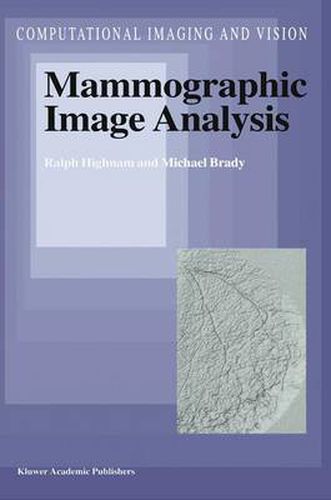Readings Newsletter
Become a Readings Member to make your shopping experience even easier.
Sign in or sign up for free!
You’re not far away from qualifying for FREE standard shipping within Australia
You’ve qualified for FREE standard shipping within Australia
The cart is loading…






The key contribution of the approach to X-ray mammographic image analysis developed in this monograph is a representation of the non-fatty compressed breast tissue that can be derived from a single mammogram. The importance of the representation, called hint, is that it removes all those changes in the image that are due only to the particular imaging conditions (for example, the film speed or exposure time), leaving just the non-fatty interesting tissue. Normalizing images in this way enables them to be enhanced and matched, and regions in them to be classified more reliably, because unnecessary, distracting variations have been eliminated. The first part of the monograph develops a model-based approach to X-ray mammography, while part two shows how it can be put to work successfully on a range of clinically-important tasks. Part three develops a model and exploits it for contrast-enhanced MRI mammography. The final chapter points the way forward in a number of promising areas of research.
$9.00 standard shipping within Australia
FREE standard shipping within Australia for orders over $100.00
Express & International shipping calculated at checkout
The key contribution of the approach to X-ray mammographic image analysis developed in this monograph is a representation of the non-fatty compressed breast tissue that can be derived from a single mammogram. The importance of the representation, called hint, is that it removes all those changes in the image that are due only to the particular imaging conditions (for example, the film speed or exposure time), leaving just the non-fatty interesting tissue. Normalizing images in this way enables them to be enhanced and matched, and regions in them to be classified more reliably, because unnecessary, distracting variations have been eliminated. The first part of the monograph develops a model-based approach to X-ray mammography, while part two shows how it can be put to work successfully on a range of clinically-important tasks. Part three develops a model and exploits it for contrast-enhanced MRI mammography. The final chapter points the way forward in a number of promising areas of research.